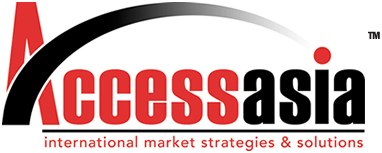When the giants of sumo wrestling prepared to step into the ring for last month’s grand tournament in Tokyo, Akiyoshi Takumori fired up his spreadsheet.
For Takumori, an economist at one of Japan’s biggest asset managers, the ancient sport is more than entertainment: It is an eye into how successful Prime Minister Shinzo Abe has been at unleashing the country’s animal spirits.
By counting the number of advertisements paraded before bouts — company names embroidered on banners and carried around the ring by a posse of men in kimono — investors can gauge whether executives are bullish on the economy and willing to spend their companies’ cash, Takumori says.
The 58-year-old is looking for any edge to assess the outlook for Abenomics, and more specifically its impact on the stock market.
After a rosy first three years under Abe, with the Nikkei stock average more than doubling, shares tumbled in 2016 to their worst start on record.
“The ads are like supplementary traffic lights to the main ones, regular economic indicators,” said Takumori, chief economist at Sumitomo Mitsui Asset Management Co. in Tokyo. “If you watch them, you can tell whether the main lights will turn red or not.”
So what signals are the sumo ads flashing? January’s tournament had 1,872 company-sponsored banners over the 15 days it ran, 5.4 percent fewer than the record 1,979 advertisements at the November event in Fukuoka.
That is still the second-highest on record, according to Takumori, who says people should not read too much into the drop. It was mostly due to popular wrestlers being out injured, he said.
The Topix index has also been buffeted by things outside its control. It has lost more than 9 percent this year, sucked into a global rout in equities caused by concerns about a slowdown in China and tumbling prices of oil and other commodities. The gauge lost 3.3 percent at the trading break on Wednesday.
“The numbers should’ve been good but because of abnormal conditions, they look bad,” Takumori said of the drop in ads.
Takumori began tallying the banners back in 1990 and soon discovered a correlation with gross domestic product. In a recent example, when the number of ads tumbled in January 2012, GDP turned negative the next quarter. Keeping count at sumo gives him a two-month head start on broader advertising statistics published by the government.
Each ad costs ¥62,000, and companies must pay for at least one a day for the duration of the tournament, according to the sport’s administrator.
Banners at the tournament represented everything from convenience-store operator Lawson Inc. to Suzusho Ltd., which makes beef jerky. All bouts are aired live on NHK, the public broadcaster. About a quarter of households around Tokyo tuned in on the January competition’s final day, according to Video Research Ltd.
“It’s not a big splurge,” said Takumori. “But companies wouldn’t be spending money on ads unless earnings were good.”
Operating profit at companies in the Nikkei average rose to a record in the quarter ended September as the weaker yen continued to buoy exporters while an influx of tourists boosted domestic firms.
The Bank of Japan’s quarterly tankan index of confidence among big manufacturers also remained strong in December but is forecast to fall in March, raising questions about whether firms will expand capital investment and raise wages.
Takumori says he is disappointed by the drop in ads. He says he was expecting a new record in January, too.
“It’s irritating,” he said. “It was unlucky.”
Source: The Japan Times - Feb 3, 2016 Authors: Anna Kitanaka, Toshiro Hasegawa

